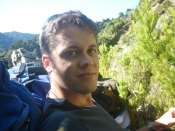Yes, but what else happened on Guy Fawkes Day?
This week I am leading the organization of several activities commemorating the tragic events of 5 November 1881. On this day, the New Zealand colonial government ordered 1600 armed constabulary and volunteers to destroy the peaceful Maori village of Parihaka. When the government started to survey land that had been confiscated during the wars of the 1860s, the villagers resisted using non-violent methods. Taranaki Maori ploughed ‘settlers’ land and escorted surveyors away. Led by Te Whiti o Rongomai and Tohu Kakahi, Parihaka has become an international symbol of colonial aggression and the power of non-violent resistance. Of course, this description is short-changing a fascinating and complex story. But the point is that in my country Parihaka is vastly overshadowed by another historical event, which also took place on 5 November, but in Britain: Guy Fawkes’ attempted destruction of a Protestant Parliament in 1605, which New Zealanders enthusiastically celebrate every year with large amounts of fireworks.
Guy Fawkes Day has provided a useful opportunity to start a very public discussion about historical significance. To do this we placed pamphlets with information about the sacking of Parihaka on all tables in the staffroom, leading to fascinating discussions during breaks about teacher’s knowledge or lack of knowledge about these events. At lunchtime we held a staff versus students debate with the moot: ‘That 5 November should be renamed Parihaka Day’. Finally, we had large groups of students using chalk to write provocative questions, quotes from historians and historical actors as well as interesting historical information about Parihaka all around the school and its immediate environs. Many students and teachers spent the day asking, and being challenged to ask ‘Why is Parihaka not acknowledged on Guy Fawkes Day? Should it be? Why or why not?’ Although far from a systematic exploration of the concept of historical significance, many in the school community were clearly starting to grapple with the idea that some aspects of the past are given more status than others and that we need to enquire into those judgments.
As I write, there are three days of commemorative activities left, and all raise fascinating questions worth their own blog entry. To illustrate, a Wellington Maori tribal grouping called Taranaki Whanui have helped us to plan some of the week. Although Wellington is hundreds of kilometers south of the village Parihaka, there are longstanding historical connections between Parihaka and Taranaki Whanui. For those in the know, there are symbolic clues to this close association all around the city. There is even a memorial to the prisoners of Parihaka who were held in a jail formerly on the site immediately adjacent to my school. For me, working with Taranaki Whanui has raised the questions: ‘What cultural and historical knowledge do history teachers need to best include local Maori when planning events like I have done? Why does the geographic location of my school matter when teaching about Parihaka? Why might some tribes dispute the authority of the tribe I have been dealing with when planning this week?’ There are no simple answers to questions like these. Next year I also want to collaborate more closely with students in planning public school events that challenge the school community to think more about historical significance. Perhaps they can help organise a week of activities about the government’s decision to invade the Waikato 150 years ago in 2013, another historical event that is, sadly, unfamiliar to many New Zealanders.


